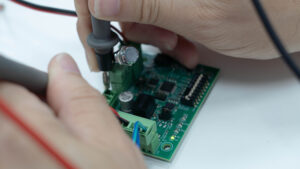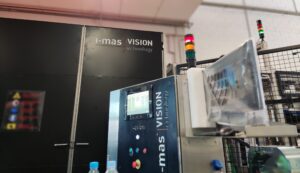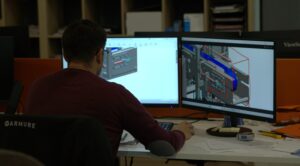In an industrial environment where every second counts and errors have a high cost, automated inspection with deep learning has established itself as one of the most effective solutions to achieve defect-free production.
This technology, based on deep neural networks, enables machine vision systems to detect defects with an accuracy and speed impossible for a human operator, even under changing conditions of lighting, orientation or surface finish.
Why is deep learning revolutionizing industrial inspection?
Unlike traditional systems based on fixed rules, deep learning models learn to recognize complex patterns from large volumes of data. This allows them to identify defects that previously went undetected or could only be detected by manual inspection.
Deep learning-based inspection systems can be integrated into production lines in real time, sorting good and defective parts without interrupting the flow. With proper training, they can adapt to multiple product or manufacturing variations without the need to reprogram each scenario. This makes them especially useful in productions with a lot of variability or frequent reference changes.
Keys to successful implementation
For a deep learning inspection system to work properly, it is necessary to follow a clear methodology:
- Define the use case: establish what you want to detect (defects, deformations, deviations, presence/absence, etc.) and what is the acceptance threshold.
- Collect and label real data: it is key to have a set of representative images, including both correct and defective parts, to train the model with sufficient variety.
- Select the right hardware: industrial cameras, lighting and processing adapted to the working environment. The quality of the visual input directly impacts the model’s performance.
- Train, validate and optimize the AI model: with specific tools (such as Cognex ViDi, Halcon Deep Learning or frameworks such as PyTorch or TensorFlow) the model is trained and adjusted until a reliable level of accuracy is reached.
- Integrate into the production environment: the system must be connected to the PLC or MES to enable automatic action (part rejection, machine stop, operator warning, etc.).
Real applications: from theory to the production line
One of the fields where deep learning is proving most valuable is pallet inspection, where it can optimize efficiency, safety, quality and accuracy without the need for labels or physical markings. Systems trained to recognize damage, contamination or structural defects in wood or plastic can inspect each unit in real time, even when there are variations in color, texture or dimensions.
This type of application extends to multiple sectors: from the automotive industry, where complex metal parts are inspected, to the pharmaceutical or food industry, where the detection of defective or contaminated packaging is critical to ensure the safety of the final product.
Advantages of deep learning inspection over other systems
- Drastic reduction of false positives and false negatives.
- Adaptability to new products without the need for reprogramming.
- Processing speed compatible with high cadences.
- Scalability: systems can be continuously trained with new data.
Thanks to these advantages, more and more companies are adopting deep learning as a pillar of their automated inspection systems.
Implementation of deep learning inspection at I-MAS
At I-MAS we have been working for years in the development of automated inspection solutions with artificial vision, deep learning and industrial robotics. Our engineering department combines experience in inspection systems design, AI algorithms programming and automation to offer comprehensive solutions tailored to the specific needs of each customer.
From the definition of the use case to the final integration in the plant, we accompany our customers to ensure an effective and scalable implementation, aligned with their quality and efficiency objectives.
Do you want to know real success stories or analyze the feasibility of an inspection system in your line? Contact us or visit our projects section.



